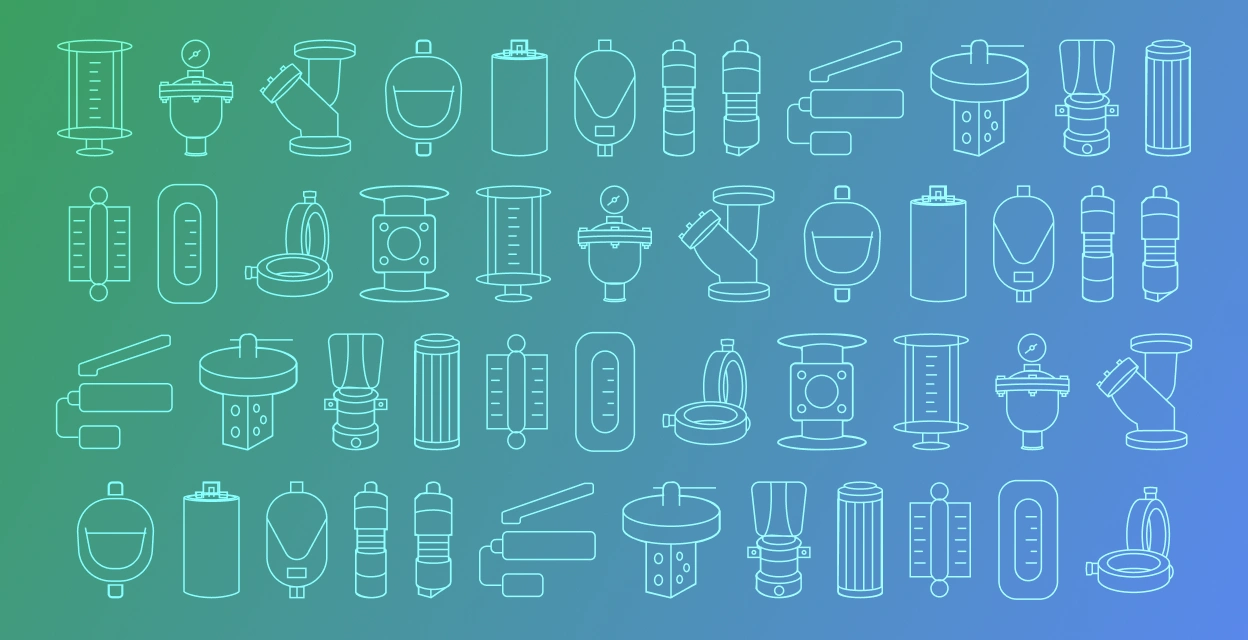Introduction - When Accuracy Doubles, Reliability Multiplies
In today’s digitally controlled oil & gas plants, dual pressure sensors form the backbone of redundancy and safety.
By measuring pressure at two independent points—or by providing a redundant signal pair-they ensure that critical hydraulic and process systems continue functioning safely even if one channel fails.
But constant vibration, pressure cycling, and fluid contamination degrade sensors over time, causing signal drift, inconsistent readings, or complete sensor loss.
That’s why certified repair and testing are vital to restore OEM accuracy and compliance.
“When one sensor drifts, the other saves; when both are calibrated, the system thrives.”
- Rahul Verma, Instrumentation Lead, Petronash Engineering Services Pvt. Ltd.
Why is dual pressure sensor repair & testing important?
Because it guarantees redundancy, accuracy, and operational safety in critical systems. Certified repair and calibration ensure both channels meet API, ASME, and ISO 17025 standards-reducing downtime and maintaining compliance across industrial and offshore applications.
1. How Dual Pressure Sensors Safeguard Process Systems
Dual pressure sensors monitor two parameters or provide a redundant signal pair for fail-safe control. They are key in:
- Wellhead Control Panels (WHCPs)
- Hydraulic Power Units (HPUs)
- Chemical Injection Skids
- Process and Pipeline Automation
Reference: Omega Engineering - Pressure Sensor Fundamentals
Fact: Dual redundancy improves system reliability by up to 65 % in safety-critical operations (Industrial Instrumentation Survey, 2024).
2. Common Failure Modes in Dual Sensors
- Calibration drift from temperature and vibration exposure
- Seal degradation causing fluid ingress
- Electrical connector corrosion in humid zones
- Over-pressure shock leading to diaphragm deformation
- Signal noise or offset errors from aging electronics
Reference: IFM Sensors - Common Sensor Failures
Tip: Routine recalibration every 6 months maintains ±0.1 % accuracy across dual channels.
3. Petronash Certified Repair & Testing Process
Petronash applies OEM-level precision and API/ISO protocols through a five-step process:
- Step 1 - Diagnosis & Pre-Test: Visual inspection and signal stability analysis; verification of sensor channel integrity
- Step 2 - Disassembly & Cleaning: Removal of diaphragm caps and connectors; ultrasonic cleaning in ESD-safe work bays
- Step 3 - Component Replacement: OEM-spec diaphragm and seal replacement (Viton/PTFE); re-termination of cables and connectors
- Step 4 - Dual-Channel Calibration & Verification: Traceable calibration using master gauges per ISO 17025; cross-channel validation for linearity and redundant response
- Step 5 - Certification & Documentation: Reports include traceability, drift graphs, pass/fail status; certificates issued under API Q1 / ISO 9001 framework
Reference: Fluke Calibration - Pressure Testing Methods
Outcome: Both channels restored to OEM accuracy with full audit traceability.
4. Global Standards & Compliance
- API 6A / 16D - Control & safety instrumentation
- ASME Sec VIII - Pressure equipment design integrity
- ISO 17025 - Calibration traceability
- ISO 9001 / 14001 / 45001 - Integrated management systems
- NACE MR0175 / ISO 15156 - Corrosion resistance for H₂S service
Reference: DNV - Offshore Equipment Certification
Result: Dual sensor assemblies validated for onshore and offshore operation worldwide.
5. Advantages of Certified Repair over Replacement
- Cost Savings: Up to 60 % cheaper than replacement
- Reduced Lead Time: Faster than OEM supply cycles
- Sustainability: Extends sensor life, reducing e-waste
- Performance: Restores accuracy to ±0.1 % of FS
- Documentation: Full API / ISO compliance records for audit
Reference: Hydraulic & Pneumatics - Instrumentation Upkeep Guide
Value: Sustainable maintenance with no compromise on precision.
6. Preventive Maintenance Recommendations
- Schedule recalibration every 6-12 months
- Use filtered hydraulic fluids (ISO 4406 16/13 cleanliness)
- Inspect electrical connectors for oxidation
- Verify signal symmetry between channels
- Replace O-rings at every major shutdown
Reference: Machinery Lubrication - Pressure Sensor Care
Tip: Consistent maintenance increases sensor reliability by > 40 %.
7. Why Choose Petronash for Dual Pressure Sensor Repair
Petronash Advantage:
- 20 + years of instrumentation expertise
- In-house calibration bays up to 20,000 psi
- Dual-channel digital test benches with data logging
- Third-party inspection (BV, DNV, ABS)
- Certified to API Q1, ASME, ISO 17025
- Global support and rapid turnaround for offshore sites
- Eco-compliant procedures under ISO 14001
Reference: Bureau Veritas - Calibration System Validation
Outcome: Double-verified accuracy, zero drift, and full regulatory compliance.
FAQs
- What is a dual pressure sensor?
It is a redundant two-channel sensor used for safety and control applications to ensure continuous pressure monitoring. - Why does it require regular testing?
Because any signal drift or failure on one channel can compromise safety; routine testing verifies redundant accuracy. - Can dual pressure sensors be repaired?
Yes. Petronash restores them using OEM-grade parts and ISO 17025 traceable calibration. - What standards apply to pressure sensor testing?
API 6A, ASME Sec VIII, ISO 9001, ISO 17025, and NACE MR0175. - What is the typical pressure range?
From 0–10,000 psi to 0–20,000 psi depending on model. - Do Petronash repairs carry certification?
Yes — each unit is issued a traceable calibration certificate and third-party validation if required. - Does Petronash offer on-site testing?
Absolutely — mobile test units are available for offshore and remote field projects.
When pressure accuracy is non-negotiable, trust the team that certifies precision.
Petronash Engineering Services Pvt. Ltd. offers fully certified repair and testing for dual pressure sensors used in critical hydraulic and process applications.
Why Petronash:
- 20 + years of oil & gas instrumentation expertise
- In-house dual-channel test facilities up to 20,000 psi
- API / ASME / ISO 17025 certified calibration & repair
- Third-party inspection (BV, DNV, ABS)
- Eco-responsible process per ISO 14001
- Global field support with rapid turnaround
Petronash - Engineering Redundancy You Can Rely On.
📩 Email: [email protected]
🌐 Website: www.petronashengineering.com
 Back To Blogs
Back To Blogs